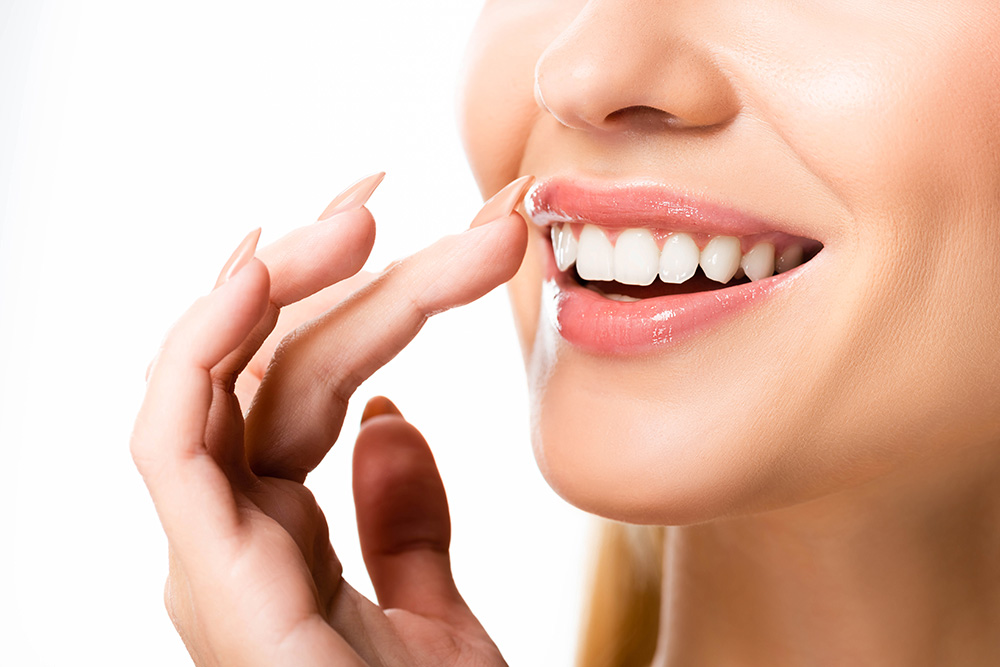Dental Inlays and Onlays Near You
If you’re suffering from a large cavity or a tooth that’s fractured or broken, you’re probably in pain and eating could be difficult. You want someone to fix your tooth and make the pain go away as quickly as possible.
In cases where the damage is too extensive to repair with a regular filling, Dr. Syed may elect to restore your tooth with an onlay or an inlay. These natural-looking treatments provide greater stability than a regular dental filling, and they also have advantages you won’t get with a dental crown.
Compared to a dental crown, onlays and inlays are less invasive and more economical. They also allow Dr. Syed to preserve a greater portion of your natural tooth.

The Difference Between Inlays and Onlays
A regular filling is called a direct restoration because Dr. Syed inserts the filling material directly into the tooth where it then hardens. Onlays and inlays are called indirect restorations because they’re created outside your body at a dental laboratory.
Onlays and inlays are both used to restore the chewing surface of a molar or a premolar. These are the square-shaped teeth that are situated behind your canines. The difference between an onlay and an inlay is that an inlay is used to restore the tooth’s chewing surface, while an onlay restores the chewing surface in addition to the cusps that stick out at the edges of the tooth.
In the past, onlays and inlays were commonly made using gold, but today they usually consist of porcelain or acrylic, which are both attractive and durable options.
Reasons To Receive an Inlay/Onlay
Dr. Syed may recommend an inlay or an onlay in the following situations:
- For a cavity that’s too large to restore with a filling
- To restore a cracked or fractured tooth
- When the damage isn’t extensive enough to require a crown
The Inlay/Onlay Process
The first step in making your inlay or onlay is taking an impression of the affected tooth. That way, our dental lab can create a restoration that fits perfectly. Then we’ll provide you with a temporary restoration to wear until your permanent one is prepared and ready for placement.
When it’s time to place your inlay or onlay, the tooth and surrounding areas will be numbed to ensure you don’t feel any pain during the procedure. If there’s a cavity, the damaged portion of the tooth will be removed.
Before placing your permanent inlay or onlay, Dr. Syed will prepare the tooth by cleaning its entire surface and smoothing it out. Then he’ll permanently bond the restoration so your tooth will look and feel like new.
FAQs
Today we commonly use porcelain or acrylic. These are both excellent options for dental restorations because they’re durable, tooth-colored materials that are barely noticeable.
Although it’s less common than it used to be, some inlays and onlays are made of gold. People usually choose this option for back molars that can’t be seen when you’re talking or smiling.
Yes, the two terms are used interchangeably.
Inlays typically range in price from about $450 to $1250 and onlays generally cost between $600 and $1500. An inlay or an onlay does costs more than a regular filling, but either of these treatments is less expensive than a dental crown.
During the procedure, we administer a local anesthetic to make sure you don’t feel any pain. If you experience any discomfort following your procedure, Dr. Syed will usually prescribe over-the-counter medication to treat your pain.
Call Dr. Syed Right Away If Your Tooth Is Damaged
If you have a tooth that’s causing pain or discomfort, call Dr. Syed at (302) 994-3093 right away. We’ll make the pain go away and restore the tooth with an attractive, tooth-colored restoration.
Or, feel free to leave us your contact information, and we’ll get back to you right away.
